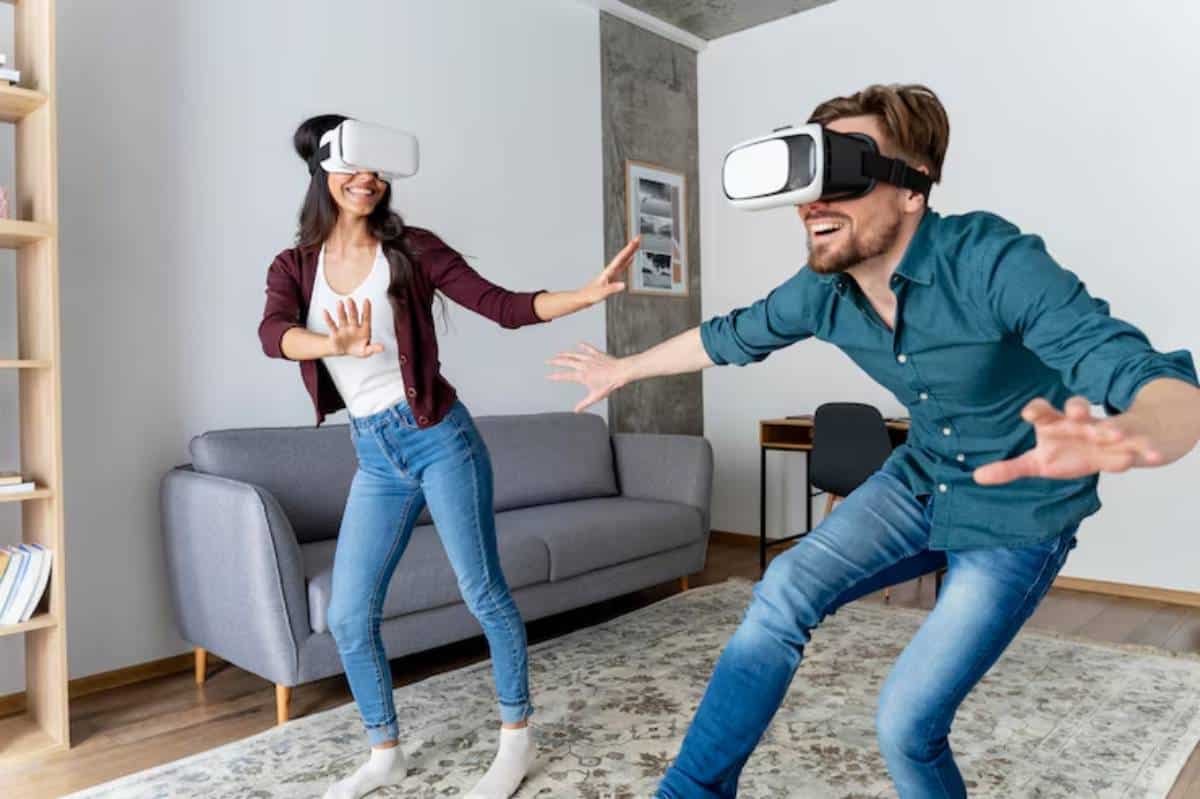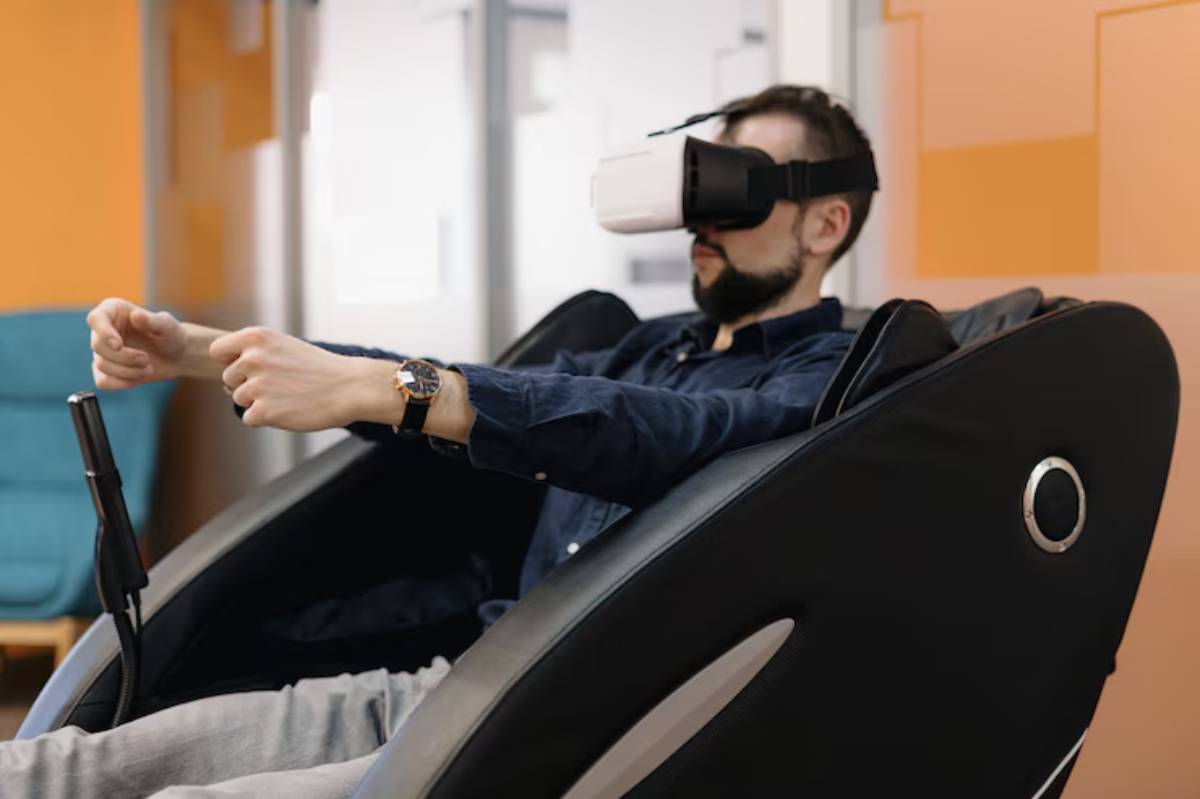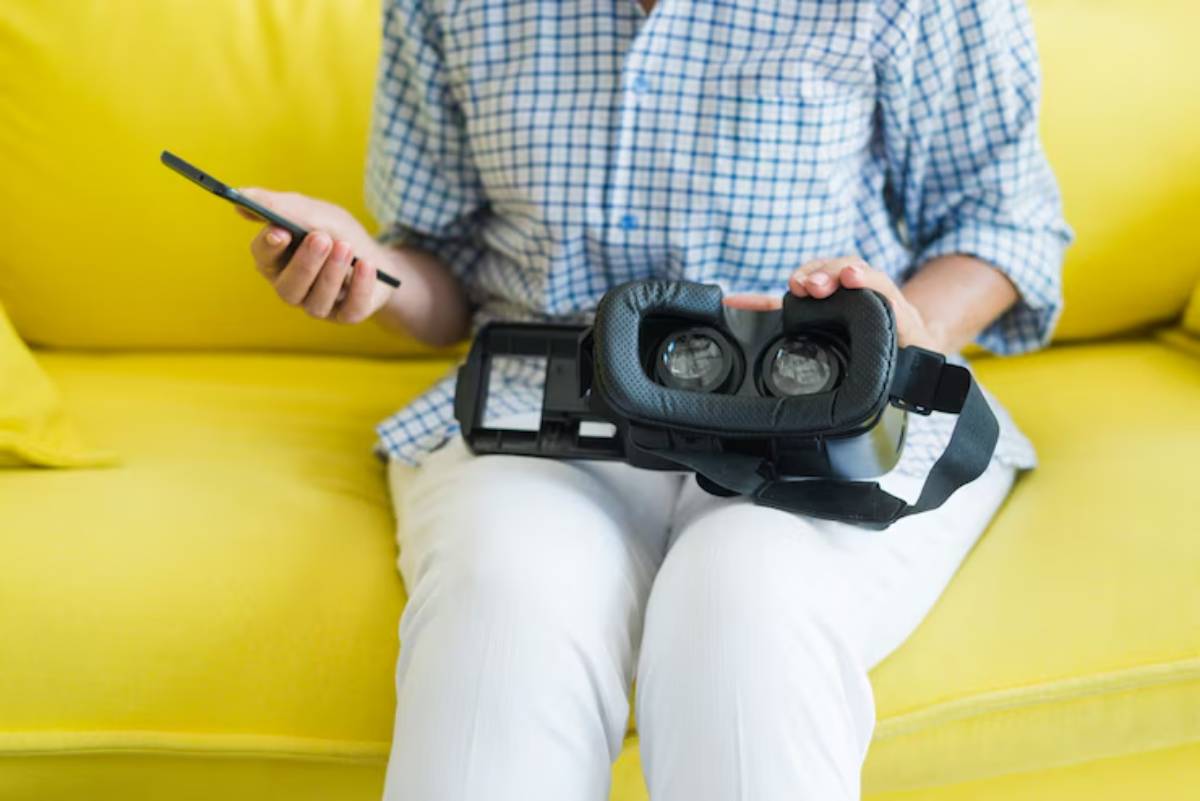
Comparing Latency in Wireless vs Wired VR
Have you ever turned your head in VR and felt like the world was lagging just a beat behind you? That jarring delay, no matter how brief, can break immersion — and sometimes, even cause motion sickness. It all comes down to one key factor:
Latency.
Whether you’re exploring fantasy landscapes or navigating cockpit controls, VR latency plays a huge role in how natural and responsive your experience feels. And as wireless VR becomes more mainstream, many are asking:
Does the freedom of wireless come at the cost of performance?
In this article, we’ll do a side-by-side VR latency comparison between wireless and wired setups, explain what causes delays, and help you decide which kind of headset is best for your needs. If you’re chasing buttery-smooth gameplay or simply want a headset that reacts as fast as you do, read on — this is your guide to understanding and managing VR lag.
What Is Latency in VR?

The Basics
Latency in virtual reality refers to the time delay between your physical action and the headset’s visual response. It’s usually measured in milliseconds (ms), and even small differences can be noticeable.
For example:
- Turn your head → headset detects the movement → display updates the image. If that process takes more than 20ms, you may start to notice lag or blur.
Types of Latency in VR
There are multiple points where latency can creep in:
- Motion-to-photon latency: Time from movement to visual display update
- Input latency: Time between controller input and in-game response
- Streaming latency (in wireless VR): The Time it takes to transmit video frames over a network
Each of these contributes to the overall sense of responsiveness (or lack thereof).
Why Low Latency Matters in VR

1. Improved Immersion
Low latency makes everything feel instantaneous. Your brain is tricked into believing that the digital world is real, which is essential for a truly immersive VR experience.
2. Better Gameplay Accuracy
When every frame counts — especially in competitive shooters, rhythm games, or fast-paced sports titles — low latency ensures that:
- Your shots are accurate
- Your reflexes are rewarded
- Your performance isn’t hindered by tech limitations
3. Reduced Motion Sickness
High latency disrupts the brain-body connection, increasing the likelihood of:
- Nausea
- Dizziness
- Disorientation
Most users report significantly fewer issues at under 20ms latency, which is considered the comfort threshold for motion-rich VR environments.
Wired VR: The Gold Standard for Low Latency

Why It’s So Fast
Wired VR headsets are connected directly to your PC or console via USB, DisplayPort, or HDMI.
This allows for:
- Uncompressed video transmission
- Stable, high-bandwidth data flow
- No reliance on wireless signals
The result? Low latency — typically between 10–20ms — with minimal frame loss or stuttering.
Best Low-Latency Wired VR Headsets
| Headset | Approx. Latency | Connection Type | Notes |
| Valve Index | ~11ms | DisplayPort + USB | Elite tracking with 144Hz support |
| HTC Vive Pro 2 | ~12ms | DisplayPort + USB | Crisp resolution with wide FOV |
| PSVR2 | ~15ms | USB-C (PS5) | Optimised console experience |
If you’re wondering whether going back to cables is worth it, read Are wired VR headsets still worth it to weigh up the pros and cons.
Wireless VR: Freedom With a Trade-Off
Why It’s Slower
In wireless VR, the headset either runs games natively (standalone mode) or streams them from a PC over Wi-Fi.
Latency increases due to:
- Video compression and encoding
- Transmission delay over Wi-Fi
- Decoding on the headset side
Typical wireless latency hovers around 30–50ms, depending on network quality, headset model, and software used.
Streaming Adds More Delay
When streaming PC VR content wirelessly, extra steps introduce more latency:
- PC renders the game.
- The image is encoded and compressed.
- Data is sent over Wi-Fi to the headset.
- The headset decodes and displays the frame.
Each step adds a few milliseconds, and if your network isn’t perfect, frame drops or spikes can occur.
What Impacts VR Latency?
1. Network Quality (Wireless Only)
- Use a Wi-Fi 6 or Wi-Fi 6E router
- Connect your PC via Ethernet, not Wi-Fi
- Avoid crowded networks and interference
2. Hardware Performance
- A strong GPU and CPU reduce rendering time
- Low-end PCs may drop frames, increasing perceived latency
3. Display Refresh Rate
- Higher refresh rates (e.g. 120Hz, 144Hz) reduce frame delivery time
- Low refresh rates increase motion blur and delay
4. Software Optimisation
- Some tools (like Virtual Desktop or SteamVR) let you tweak bitrate, resolution, and encoding settings for lower latency
Latency vs Resolution: What Should You Prioritise?
It depends on your use case.
- Gamers should prioritise latency. Every millisecond can impact gameplay.
- Film and media consumers may prioritise resolution and colour depth.
- Designers and developers need both, but can tolerate slightly higher latency during non-real-time tasks.
If you’re in doubt, aim for balance. Lower your headset’s resolution slightly to gain smoother motion and faster response time.
Reduce Wireless VR Lag
If you’re using wireless VR and want to minimise latency:
- Use a Dedicated Wi-Fi Network
- Avoid devices like smart TVs, phones, or tablets on the same band
- Optimise Router Placement
- Keep the router and headset in the same room
- Avoid walls and large metal objects
- Switch to 5GHz or 6GHz Band
- Lower interference and faster speeds
- Limit Streaming Resolution
- Streaming at native 4K can increase compression time
- Drop to 1080p or 1440p for better responsiveness
- Keep Your System Cool
- Overheating causes throttling, which increases rendering and encoding times
Wired or Wireless for Low Latency VR?
Choose Wired VR if:
- You’re a competitive or sim gamer
- Latency is your top concern
- You already own a powerful PC
Choose Wireless VR if:
- You want flexibility and portability
- You prefer shorter, casual play sessions
- You’re happy with slightly higher latency for the freedom
Some users blend both worlds by streaming wirelessly when convenient and switching to wired for intense gameplay. Many hybrid headsets like the Meta Quest 3 support both modes with ease.
Conclusion: The Lag That Makes the Difference
Latency in VR may be invisible, but its effects are undeniable. From smooth turning to split-second timing in games, low latency is a cornerstone of great VR. Wired systems continue to lead in responsiveness, offering precision and consistency that wireless setups still chase.
That said, wireless VR has come a long way. With the right tools and a strong Wi-Fi network, today’s standalone headsets can deliver near-wired performance, and the freedom to roam makes them irresistible for many users.
Ultimately, the best choice is the one that matches your priorities. Whether it’s performance-driven wired gear or freedom-first wireless headsets, understanding how latency works lets you optimise your experience.
Which side of the cable do you fall on? Share your setup or latency hacks in the comments. If you’re shopping for a new headset, check out our VR headset comparison guide to find the right match.


